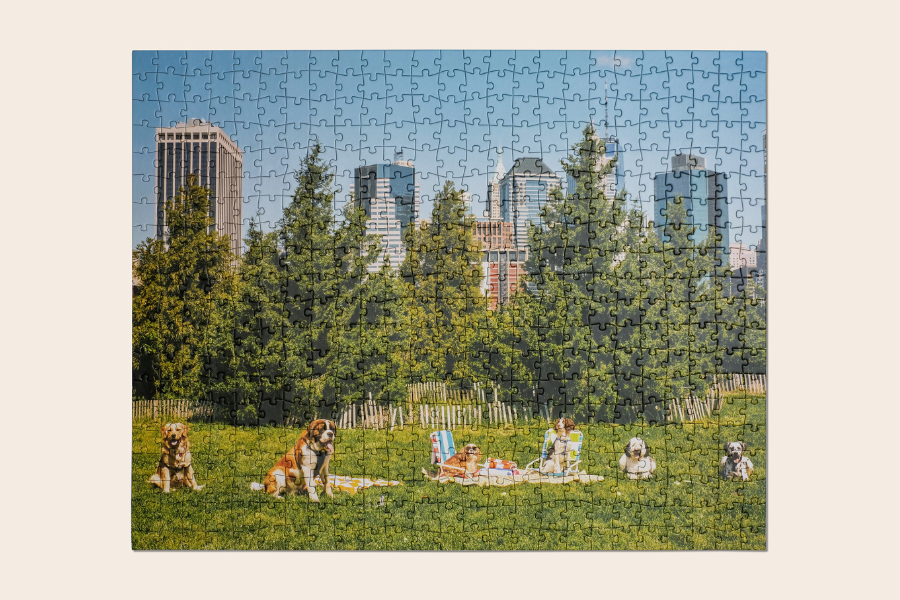We love our dogs, but it’s no secret that these four-legged friends can easily transform a beautiful, green lawn into an unsightly mess. While no plant is immune to the damage dogs can cause, many grass types have a higher threshold to withstand the stress dogs may put your lawn through.
Certain grasses have some of the best lasting power when it comes to dog-stress. So, if you are reluctant to sacrifice your lawn for the sake of your pup, these options are the way to go.
Key Takeaways
- A number of dog behaviors can damage your lawn, though there are ways to mitigate this without changing up your grass at all.
- Grasses should contain specific elements to provide the most protection against dogs.
- Several grass types are ideal when it comes to having a great lawn and keeping your pet healthy and happy.
Dog Behaviors That Affect Your Lawn
Part of having a pet is making sacrifices and adjustments, and many dog behaviors are simply unavoidable.
Urine
Your dog needs to pee, and it is surely better done outside than on your carpet or furniture! The high nitrogen concentration in dog urine can affect your lawn in a multitude of ways. Patches of grass may grow faster and thicker if the nitrogen content is diluted, or it could die because urine has high nitrogen concentrations. Walking your dog more often can help, and many dog owners opt to have a specific area in the yard for dogs to urinate.
Feces
There is also no avoiding dog poop, which includes nitrogen as well. Since feces is solid, nitrogen damage is much slower in this scenario. The best way to avoid nitrogen damage through dog feces is by cleaning up after your dog frequently. You can also train your pup to poop in a specific part of the yard to spare the rest.
Digging
All dogs must pee and poop, but not all dogs dig. Still, this could very well be a behavior you run into. There are a number of potential solutions if you cannot get the behavior to stop, like installing fences around the specific regions you want your dog to avoid digging in. Some dog owners also opt to install raised beds, as the elevated edges often keep dogs from further exploring.
What Makes a Type of Grass Good for Dogs?
Before we look at the best types of grass for dogs, consider the specific elements to look for that help combat the wear and tear:
Rapid Growth Rate
If grass grows back quickly, it is more easily able to recover if your dog kills a patch. It may be brown and dry for a little while but not for long. Consider grasses that spread with rhizomes and stolons, as they will grow laterally along the ground to fill any problem spots without having to plant new seeds.
Deep Root System
If grass has thick, deep roots, it is more durable, which makes it harder to damage. So even if your dog tends to run, roll around, or pee in the same spots, deep-rooted grass is more likely to survive. Strong roots also discourage digging, as this grass is harder to pull up.
Climate Compatibility
If you have a grass type that isn’t fit for your climate, you’re already at a disadvantage. You want to go with grass that will thrive where you live.
The U.S. has three climate zones to consider when it comes to grass: the cool-season zone (northern parts of the country), the transition zone (the middle of the country, where both cool- and warm-season grasses grow), and the warm season zone (southern parts of the country).
Best Grass For Dogs
Bermuda Grass
Bermuda is a grass suitable for warm season or transition zones that is great when it comes to standing up against our dogs, due to its dense roots. It’s also fast-healing, resilient in drought conditions (in fact, it needs at least six hours of sun exposure each day and doesn’t need frequent watering), and its quick recovery time.
Zoysia Grass
If you have parts of your yard that are regularly shaded, zoysia grass may be a better option. This grass has high wear and shade tolerance, easily able to recover from damage from your furry family member. This grass fit for warm-season or transition zones and grows in dense mats, helping to block dogs from digging and shield soil from urine damage. One of the few downsides is that zoysia grass can take time to establish its roots, so reseeding may take some time.
Kentucky Bluegrass
If your dog is active and constantly running around the yard, Kentucky Bluegrass is a cool season option that is durable enough to withstand your hyper pup. This variety is fast-growing, it heals quickly, and while it does best in cooler areas, it can grow well in most climates. The blue-hued blades of grass are also an attractive bonus!
Tall Fescue
Tall fescue grass tends to be incredibly strong and able to tolerate heavy foot traffic and the wear and tear dogs often bring to lawns because of its deep roots. This option thrives in cool season or transition zones, is highly drought resistant, and does well in the sun or shade. However, it does not spread well on its own, so you may need to reseed dead spots if your dog causes damage.
Perennial Ryegrass
This grass type can be a bit pickier about growing conditions, as it does not tolerate heat, shade, or drought well — it does well in colder climates, namely the cool-season or northern transition zone. Perennial ryegrass grows soon after planting it, so it is a great option for reseeding dry patches. That said, it will not heal its own brown spots, so you’ll have to plant new seeds if you have bare patches.
Final Thoughts
While it can be frustrating to deal with lawn damage, changing up your yard, your own habits, and those of your dog can help, but the grass type you choose also goes a long way.
Unfortunately, part of having a dog is dealing with yard damage to some degree, but going with one of these grass types that fits with your region may be the catalyst to enjoying a great lawn as a dog owner, no matter how rambunctious they might be!



